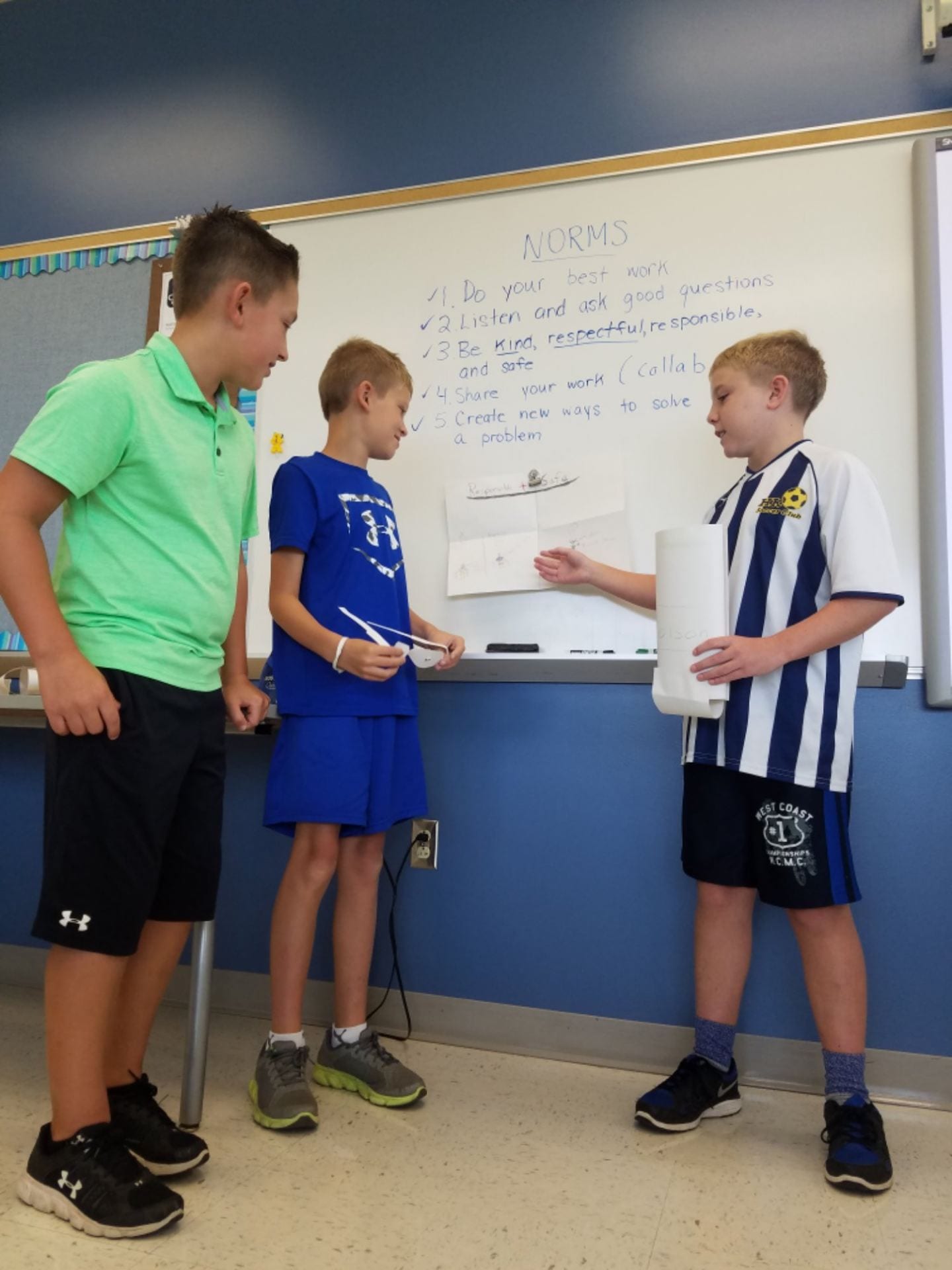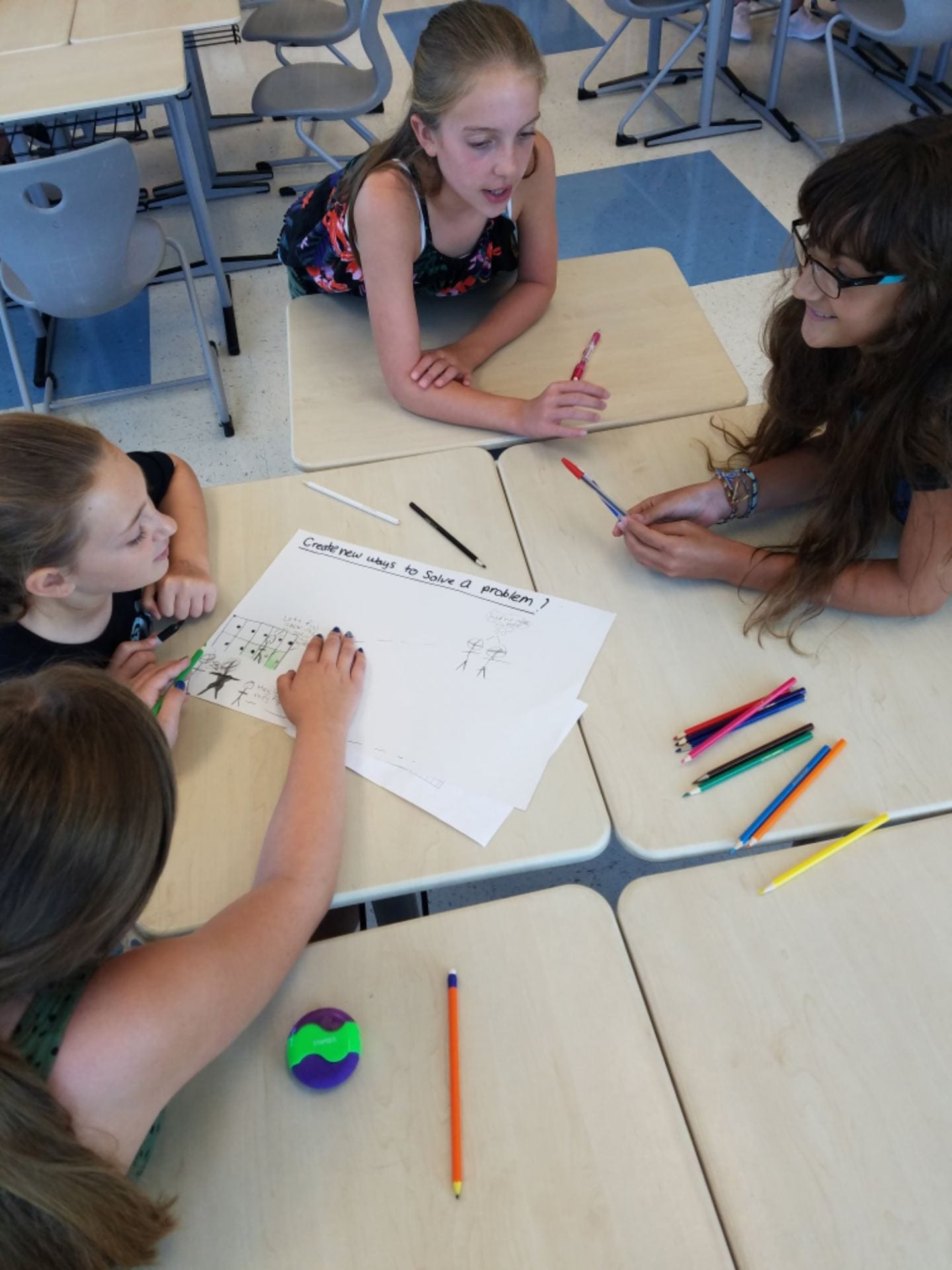We are making a Claim, supporting with Evidence, and creating an Analysis.
Gathering Evidence
Claim, Evidence, and Analysis
Lab Safety Posters
Modeling Science Norms
Modeling Science Daily Norms
Mr. Houlton’s Blog Page- Welcome!!
All students received forms in homeroom. They need to bring back:
1) Acknowledgement & consent form
2) Emergency Card
3) Office 365 Letter
In Science we created five norms:
1) Do your Best Work and Have Fun
2) Actively Listen and ask good questions
3) Be Kind, Respectful, Responsible, and Safe
4) Share Your Work (Collaborate)
5) Create New ways to solve a problem
Using Google Docs For Shared Vision
During our Learning Theory on-line class our professor put us into break out writing groups. Using the articles, we had to craft a vision statement using the various learning theories we are studying. Writing with four peers simultaneously during a web class was powerful. We were forced to process longer and exhibit patience as only one voice can be heard at a time. Leaders emerged, however, we all participated, and the end product was indeed a collaborative effort. I learned a ton about Heutagogy and how it applies to my own leadership because this activity celebrated “knowledge sharing” instead of “knowledge hoarding”. I will absolutely use Google Docs as a tool to foster self-directed or in this case group-directed learning hubs in the future with scaffolding support built in through strategic peer placements.
Our results our below.
As school leaders preparing to engage faculty in professional learning, all learning styles and differences should be acknowledged from the beginning. The acknowledgement of these
learning styles and differences should enable staff to advocate for themselves and their own learning throughout the process. In addition, we will enable self-directed learners to have all of their voices heard through the use of collaboration and technology
which can give “greater transparency and offer support” to learners in a variety of settings. As technology is used to connect learners (both faculty and leaders), “knowledge sharing” occurs rather than “knowledge hoarding”. Throughout this process of knowledge sharing, we will be mindful of the notion of double loop learning that allows for reflection on current theories and practices. It is key to acknowledge that staff can learn as much from students and that students can teach each other. We need to continue to evolve and remain open minded to new research presented about the changing and developing theories of learning. As a leader, it is essential to model the mindset of a lifelong learner.
Where Are The Kids?
I’m out of the pool and thinking about Professional Development that is “sticky”. Fred Ende talks about “timing” in his awesome book titled, “Professional Development That Sticks”. I think best just after exercising and my swim coach (who also happens to be my son) had us do 3,000 yards this morning.
In Ende’s book he uses the TAR (Think, Act, Review) method to help keep professional development learning “sticky” or accessible to the participants long after the session is complete. I was thinking how cool it would be to have kids take part in this process. During the Act and Review phase students could be used as strategy recipients. Data could be collected during the workshop to analyze the effectiveness of implemented strategies.
If scaffolding techniques are being introduced to assist the high leverage practice of writing to learn, then students of varying writing levels could be used to assess their effectiveness. If the goal of scaffolding is to move learners from support to independence, then the support structures must be accessible and user friendly. When writing an essay, steps to complete the process could be provided and graphic aids within each step could be accessible. Leaders facilitating the PDL (Professional Development Learning) could model the scaffolding strategies on the adult learners and they in turn could model these techniques to real students who volunteered to help teachers learn.
During the review phase, qualitative and quantitative data could be shared. Did students access the scaffolds in place when they got stuck? How effective were the organizers? Learners at similar writing levels could be given the same writing task without the workshop scaffold support and scores could be analyzed .
This type of PDL could save valuable time and give educators answers before even walking into the classroom. Finally, it could be a valuable tool to receive student feedback after the PDL session. I’ve found students are happily willing to expose my blind spots and often offer insightful suggestions that help make learning a more enjoyable and “sticky” experience.
Adult Learning Theory for Kids
I’m in DC for Christmas and talking with my mother about the Merriam and Bierema work from Adult Learning-Linking Theory and Practice (Chapter Two: Traditional Learning Theories). After reviewing the theories covered in the chapter, she suggested to take the good from each and apply them to student learning.
Here is my first shot!!
Create clear and attainable intrinsically motivated destinations for learning, offer individual and group modeled scaffolding techniques to build more complex levels of understanding, give self monitoring mechanisms, build networking skills by offering communicative technologies, and celebrate equally success, failure, and adjustments made along the way. Finally, allow everyone to share their work by answering these three questions: What did we do? How well did we do it? Is anyone better off?






